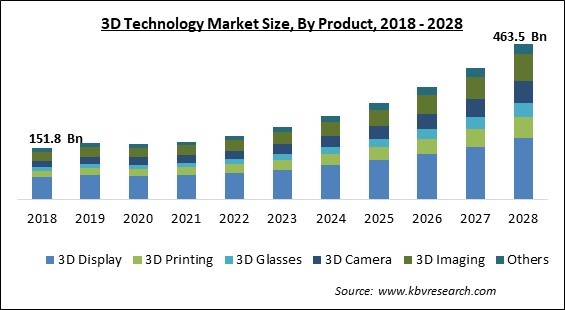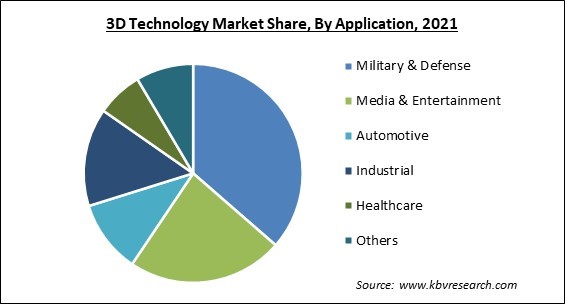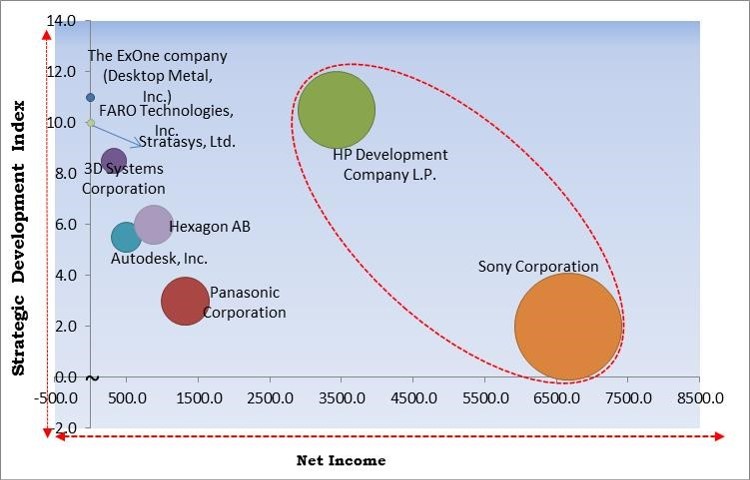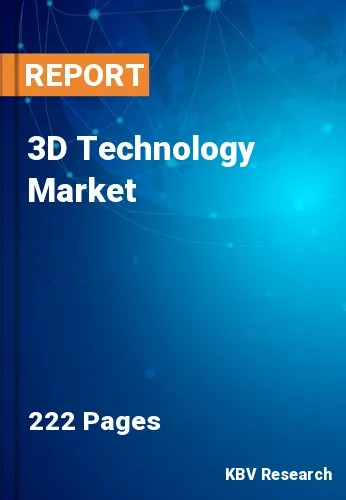The Global 3D Technology Market size is expected to reach $463.5 billion by 2028, rising at a market growth of 16.1% CAGR during the forecast period.
3D views of the data or photos that were gathered, are delivered using 3D technology. In a number of application areas, including healthcare, government & defence, aerospace, entertainment, entertainment & automotive, and industrial divisions, there is a growth in demand for products based on 3D technology. An accurate and completely effective image of an object is produced by 3D technology. It is anticipated that the use of 3D technology would reduce production costs and time across a range of application categories.

The viability of any invention can be intuitively understood by designers from the very beginning thanks to a ready-made tool. Several countries are interested in 3D printing because of its potential. This move by the governments is expected to have a significant impact on the demand for 3D printing technology. The favorable environment is contributing to the demand for 3D printing technology.
Additionally, the thought of applying 3D printing to the aerospace industry is particularly attractive because this technology can produce lightweight structures. Additionally, 3D printing technology has the capacity to produce parts that are robust enough to support flight. The requirement for heavy bolts and nuts can be avoided by manufacturing light material structures with the aid of 3D printing technology.
Players in the 3D technology business have been severely harmed by the breakout and propagation of COVID-19. One of the major factors driving the growth of the 3D technology industry is the rising demand for automobiles on a global scale. Nevertheless, lockdowns implemented by many governments to stem the spread of the COVID-19 have dramatically reduced automobile sales globally, which has had an adverse effect on the market for 3D technology. Furthermore, the GDP of nations and the per capita income of people all around the world have both been damaged by these lockdowns.
Realistic films with 3D and 4D motion images and interactive effects are increasingly popular in the entertainment field. A result of recent advancements in 3D animation and a rise in computer-based visuals, 3D is now the norm for special effects. In past years, 3D animation in films has surpassed both hand-drawn and practical effects in terms of popularity. To create a more realistic setting, visual effects (VFX) are frequently utilized in films. The utilization of 3D digital technology in films to create a comprehensive, multi-sensory cinematic experience is growing.
3D cameras, printers, sensors, scanners, and displays are utilized in the military and defense industry for accurate measurement and inspection. In comparison to more conventional measurement techniques, 3D scanners are employed to swiftly and accurately measure new or reused parts of vehicles, tanks, and helicopters. The sensors, 3D cameras, and scanners are also utilized to locate, plan routes for unmanned ground vehicles (UGVs), and map terrains.
The sensors and cameras used for 3D imaging are susceptible to dust, microparticles, contaminants, and trauma. An image's quality could be greatly impacted by a small disruption. Thus, such devices need to be handled carefully and are needed to be maintained after a regular interval of time. The dimension and complexity of the scanned 3D image, in addition to the total size and geometry of the devices be purchased, all affect how much 3D imaging costs.
Based on product, the 3D technology market is segmented into 3D Printing, 3D Glasses, 3D Glasses, 3D Display, 3D Imaging and 3D Camera. 3D Imaging segment recorded a significant revenue share in the 3D technology market in 2021. Gesture recognition, 3D modelling, 3D rendering, and other applications all make utilization 3D imaging technologies. There are several uses for 3D technology in the fields of medicine, security & surveillance, defense, entertainment, industrial automation, construction, and others. 3D medical imaging is among the most well-known uses.

By application, the 3D technology market is divided into Media & Entertainment, Automotive, Industrial, Healthcare, Military and Defense, and Others. The Military and Defense segment garnered the maximum revenue share in the 3D technology market in 2021. This is a result of flexible materials utilized in war being utilized to print incredibly accurate prototypes. The rise in the investments by various nations on strengthening their military and defense sector would create more demand for a wide range of 3D technologies and systems over the forecast period.
| Report Attribute | Details |
|---|---|
| Market size value in 2021 | USD 164.1 Billion |
| Market size forecast in 2028 | USD 463.5 Billion |
| Base Year | 2021 |
| Historical Period | 2018 to 2020 |
| Forecast Period | 2022 to 2028 |
| Revenue Growth Rate | CAGR of 16.1% from 2022 to 2028 |
| Number of Pages | 222 |
| Number of Tables | 324 |
| Report coverage | Market Trends, Revenue Estimation and Forecast, Segmentation Analysis, Regional and Country Breakdown, Competitive Landscape, Companies Strategic Developments, Company Profiling |
| Segments covered | Product, Application, Region |
| Country scope | US, Canada, Mexico, Germany, UK, France, Russia, Spain, Italy, China, Japan, India, South Korea, Singapore, Malaysia, Brazil, Argentina, UAE, Saudi Arabia, South Africa, Nigeria |
| Growth Drivers |
|
| Restraints |
|
Region-wise, the 3D technology market is analyzed across North America, Europe, Asia Pacific and LAMEA. North America emerged as the leading region in the 3D technology market with the largest revenue share in 2021. The main reason behind the adoption of 3D technology into numerous application sectors in the region is the rising need for advanced technology-based solutions that assist to shorten processing times. The U.S. and Canada are two examples of North American nations that were among the leading and early users of such technologies in a variety of manufacturing procedures.
Free Valuable Insights: Global 3D Technology Market size to reach USD 463.5 Billion by 2028

The major strategies followed by the market participants are Product Launches. Based on the Analysis presented in the Cardinal matrix; Sony Corporation and HP Development Company L.P. are the forerunners in the 3D Technology Market. Companies such as Panasonic Corporation, Hexagon AB and Autodesk, Inc. are some of the key innovators in 3D Technology Market.
The market research report covers the analysis of key stake holders of the market. Key companies profiled in the report include 3D Systems Corporation, Autodesk, Inc., Panasonic Corporation, Sony Corporation, FARO Technologies, Inc., Hewlett-Packard enterprise company (HP Development Company L.P.), The ExOne company (Desktop Metal, Inc.), Hexagon AB, Stratasys, Ltd., Vicon Motion System, Ltd.
By Product
By Application
By Geography
The global 3D Technology Market size is expected to reach $463.5 billion by 2028.
Growing Demand for 3D Technology in Entertainment Sector All Over the World are driving the market in coming years, however, Huge Cost of Maintenance of 3D Imaging Devices restraints the growth of the market.
3D Systems Corporation, Autodesk, Inc., Panasonic Corporation, Sony Corporation, FARO Technologies, Inc., Hewlett-Packard enterprise company (HP Development Company L.P.), The ExOne company (Desktop Metal, Inc.), Hexagon AB, Stratasys, Ltd., Vicon Motion System, Ltd.
The expected CAGR of the 3D Technology Market is 16.1% from 2022 to 2028.
The 3D Display market is leading the Global 3D Technology Market by Product in 2021; thereby, achieving a market value of $181.5 billion by 2028.
.The North America market dominated the Global 3D Technology Market by Region in 2021; thereby, achieving a market value of $165 billion by 2028.
Our team of dedicated experts can provide you with attractive expansion opportunities for your business.

